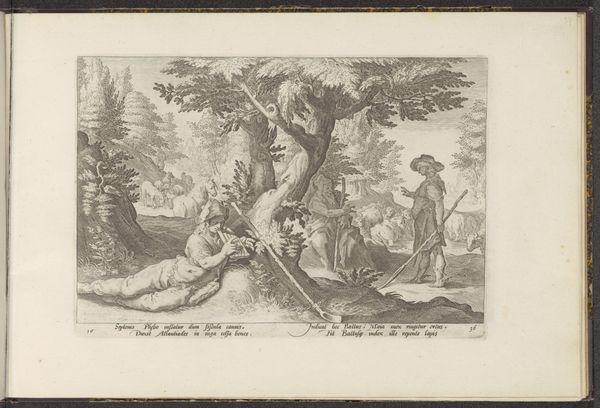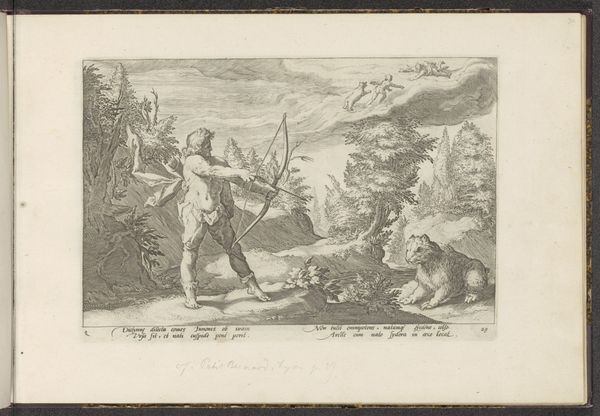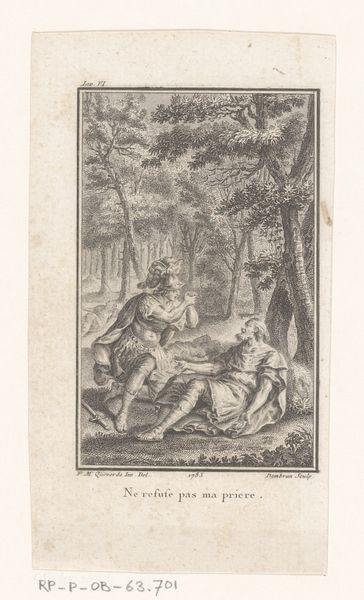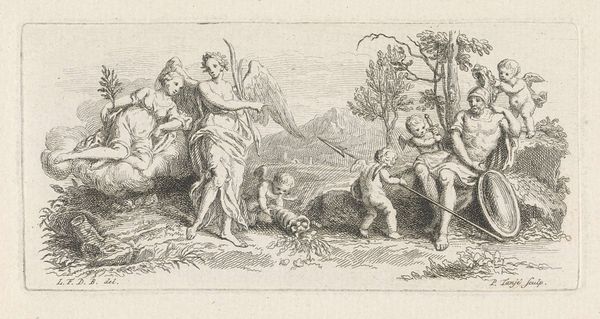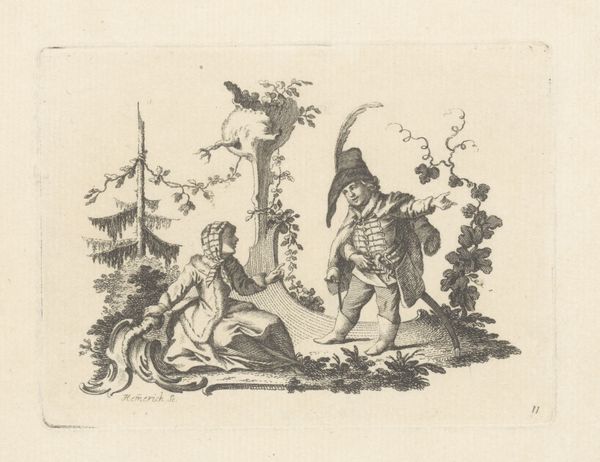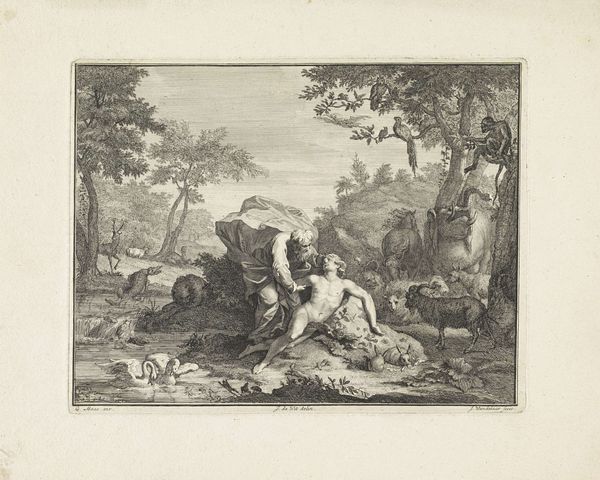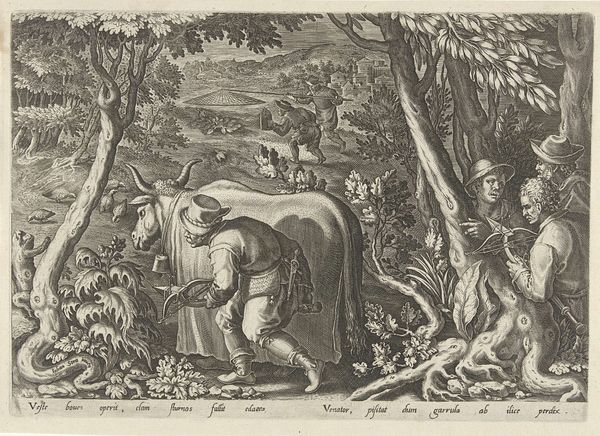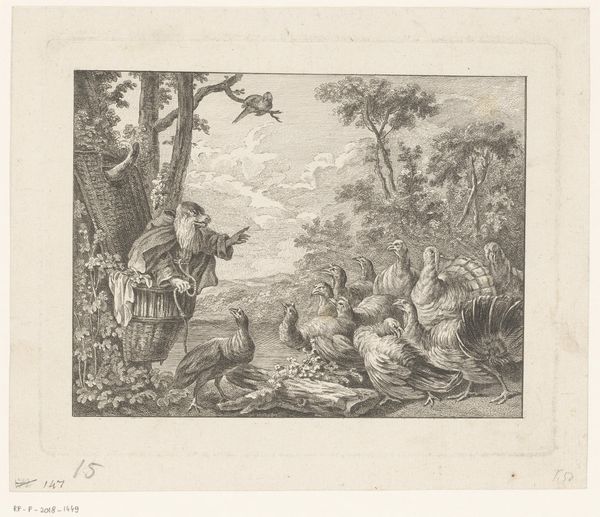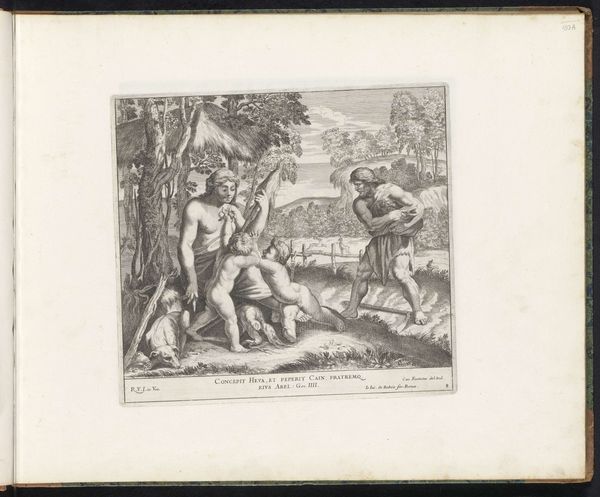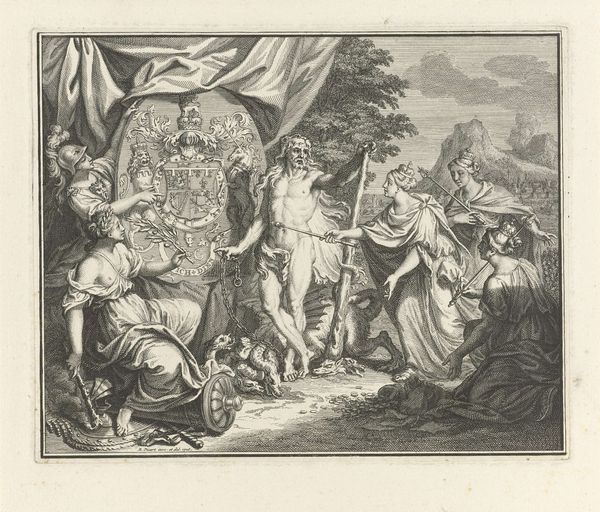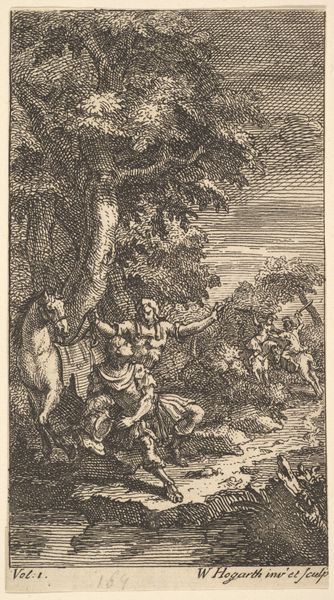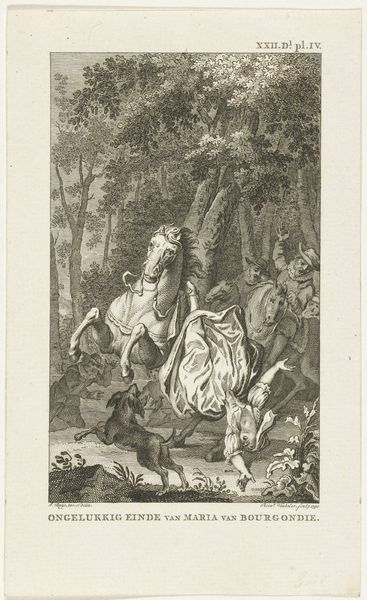
#
pencil drawn
#
toned paper
#
light pencil work
#
pencil sketch
#
charcoal drawing
#
charcoal art
#
pencil drawing
#
watercolour illustration
#
pencil art
#
watercolor
Dimensions: height 167 mm, width 232 mm
Copyright: Rijks Museum: Open Domain
Curator: Let’s turn our attention to "Aurora en Cephalus" by Magdalena van de Passe, dating approximately from 1636 to 1670, housed right here at the Rijksmuseum. What strikes you first about it? Editor: The density! It's an explosion of cross-hatching creating intense depth in a relatively small space. I am immediately drawn to considering the printmaking labor it required to generate these deep tonal and textural varieties, while the density almost smothers the classical narrative... Curator: I agree, but it's the choice of subject that pulls me in first. This is Aurora, the goddess of dawn, abducting Cephalus, a mortal hunter. The power dynamic is…problematic to say the least, especially considering its era, speaking volumes about women's positions relative to men's status in the prevailing societal framework. Editor: Certainly. It also demonstrates how printed images reproduce these mythologies through a kind of cultural and material labor. Can we think about how the tools, inks, and the very act of reproduction also frame how this relationship is distributed? The artist is crafting an idea of romance and destiny through a series of very physical processes... Curator: Precisely. We have to consider how representations such as this served to normalize those hierarchies of power, not only between humans but between mortals and the divine. This print uses the aesthetics of the idyllic landscape, almost masking the very act of forced removal from agency, making it seem natural, inevitable. The choice of print is strategic, placing the artist within a lineage of reproducing this myth for wider audiences. Editor: It is a really intense process. The details in the animals--look at the sinew and fur texture!--emphasize that intense manual labor, pushing me to remember this print as a made object. A network of decisions created with careful hands, tools, and persistent distribution methods to convey not just the artist's choices, but reflecting social conditions too. Curator: Agreed, viewing this, it really prompts a re-evaluation of the seemingly eternal narratives we often passively receive. Examining their means of reproduction illuminates the subtle ways these myths are both created and preserved in collective understanding, no? Editor: It sure does. It reinforces my view that artistic practice is entwined deeply with the realities of work, material choices, and ultimately, modes of communicating value. Curator: A great intersection of mythology, materiality, and critique!
Comments
No comments
Be the first to comment and join the conversation on the ultimate creative platform.
